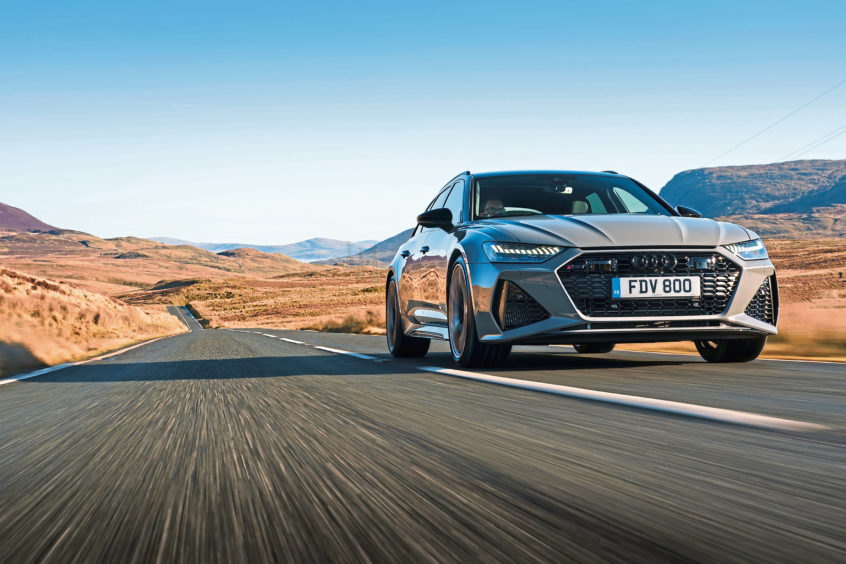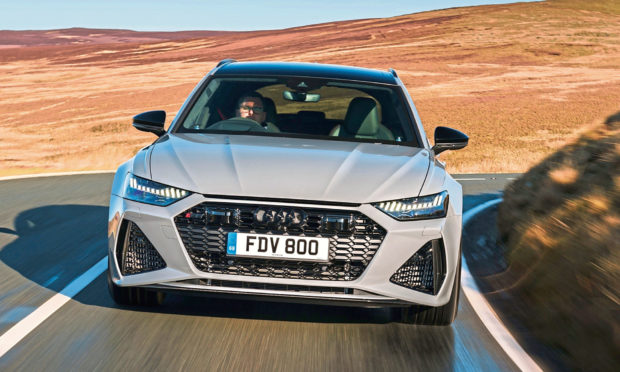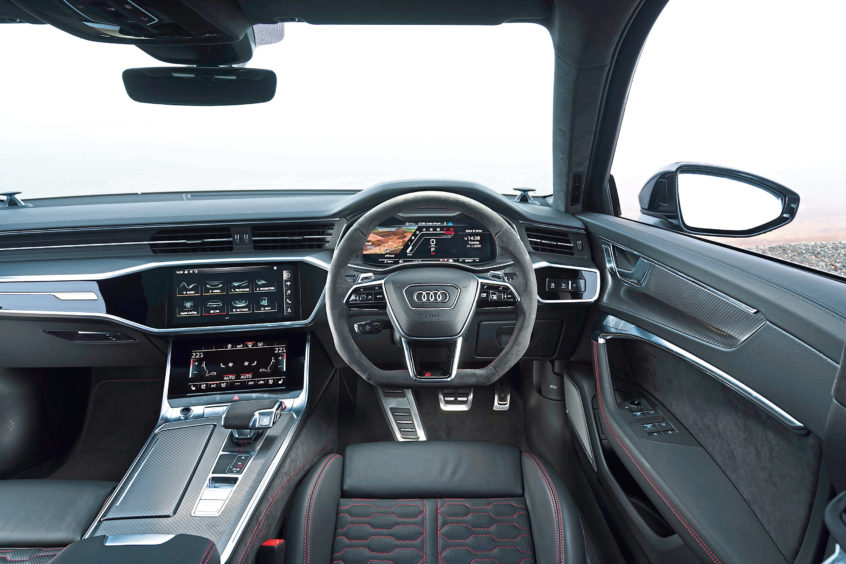When it comes to fast estate cars, there are few in the business who have historically done it quite so well as Audi.
The Porsche-developed RS 2 broke the mould for what could be done to a wagon, while subsequent RS 6 models like the C5 generation of 2002 or the V10-powered C6 of 2008 continued to showcase the brand’s ability for taking a practical estate car and turning it into something truly potent.
The previous-generation RS6 – the C7 – was introduced in 2013 and continued right the way up to 2018, placing its stake in motoring history. Now there’s a new one – so can it live up to all this pressure?
There’s been some deep reworking of the RS 6, but the fundamentals stay crucially the same. We’ve got the long, practical shape of the current-generation A6 Avant, a big, turbocharged V8 and drive going to all four wheels. It’s a recipe which went down well with the old RS 6, so you can see why Audi has retained it.
But to dismiss this as a mere facelift is to go awry because there’s a lot of clever new tech working away here. The engine is cleaner but punchier than before, we’ve got a mild-hybrid system to help with efficiency and there’s all-wheel-steering to aid with sharpness too.
Under the bonnet the RS 6 uses a twin-turbocharged V8 engine feeding drive to all four wheels through Audi’s quattro system. The figures are predictably ludicrous for what is still a useable estate car; 592bhp, 800Nm of torque (up 100Nm on its predecessor), 0 to 60mph in 3.4 seconds and 155mph flat-out – with the option to raise that to either 174mph or 189mph depending on how much you want to spend.
Audi has also integrated its 48-volt mild-hybrid system too, which allows the car to “glide” – or coast with the engine effectively switched off – at speeds of up to 99mph. It also means that the start-stop system will kick in from 13mph, further shaving valuable fuel consumption. Even so, this is still a big, heavy V8-powered estate, so you’re still only looking at up to 22.6mpg combined and CO2 emissions of 263g/km.
Behind the wheel it’s a car with two distinct characters. The one, being serene and quiet, means that the RS 6 transforms the longest of journeys into short little blips, effortlessly gobbling away the miles with the ease of a standard A6 Avant. Our car, on standard air suspension, soaked up the road imperfections while isolating road noise impressively well. Only the slight rumble of the V8 gives any indication that there isn’t some cooking-grade diesel under the bonnet.
Yet when it needs to be, the RS 6 can be truly unhinged. With RS driving modes engaged – accessed via an all-new shortcut button on the steering wheel – the whole car tightens up. The all-wheel-steering means it feels far nimbler than the car it replaces and though the V8 may not sound quite as devilish as before, it still provides more than enough aural theatre.

Looks-wise this latest RS 6 is a far more aggressive car than the one it replaces from nearly every angle. The wheel arches – 80mm wider than a standard A6 – give it a whole lot of presence, while the huge front grille dominates the “face” of the car.
We distinctly enjoyed the undercover nature of the older RS 6 – remove the badges, and few would’ve been able to distinguish it from the regular model – but there’s little chance of that happening here.
Meanwhile the interior of the current-generation A6 is one of the best in the business, so it’ll come as little surprise that the cabin of the RS 6 is just as good. Added touches include sports seats and a sport steering wheel, but on more entry-level cars it feels much the same as the standard car.
That’s no bad thing – and the ergonomics remain spot on – but you could feel that at times there’s not enough drama inside for a car costing over £90,000. It’s only when you go higher up the trim levels – to specifications like Vorsprung Edition – where you get high-end features like an Alcantara steering wheel and sportier seats, which do help to elevate the overall feel of prestige.
Being Audi’s range-topping estate car, the RS 6 gets almost all the bells and whistles that you could think of. There’s a full Virtual Cockpit setup with RS-specific dials, which integrates readouts such as speed, torque, engine output and g-forces – among others – all into one display.
As already mentioned, this new RS 6 had a whole heap of expectation on its shoulders. Thankfully, it has more than lived up to it. It’s sharper than before without having lost that all-important refinement which allows it to chew through the miles and it has somehow improved on the already excellent fit-and-finish in the older car. Expensive it may be, but if you want a performance car for every occasion, the RS 6 remains the one to have.
THE FACT
- Model: Audi RS 6 Launch Edition
- Price: £101,700
- Engine: 4.0-litre twinturbo V8
- 0-60mph: 3.4 seconds
- Max speed: 155mph
- Economy: 22.6mpg
- Emissions: 263g/km

